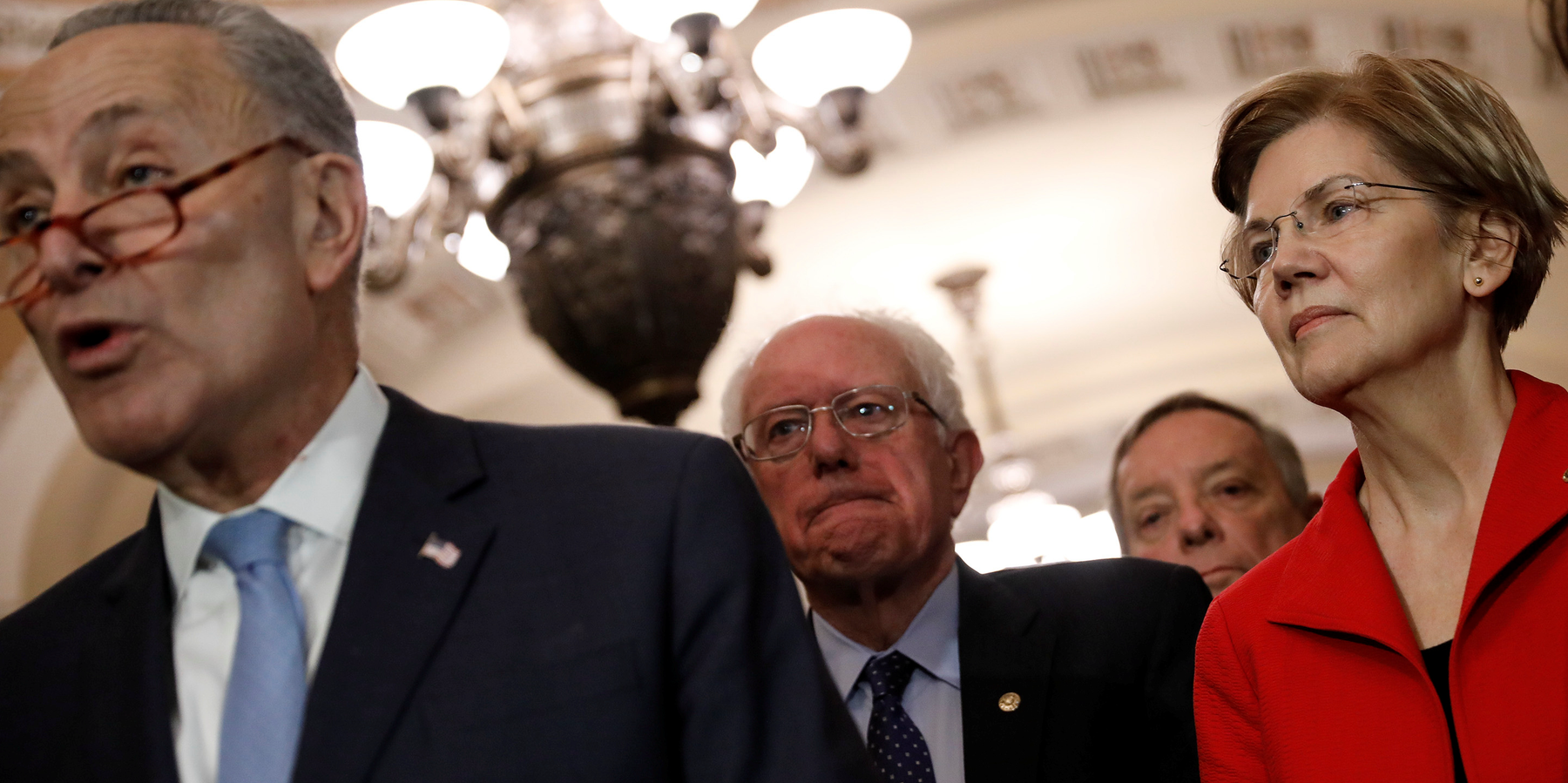It’s a great time to be a weapons contractor. The Pentagon budget is soaring towards $1 trillion per year. President Biden has called the arms industry and its workforce “the arsenal of democracy” for their role in providing the systems Ukraine needs to defend itself from Russia’s invasion.
Meanwhile, the Pentagon and industry-boosters in Congress are talking about all manner of reforms to move money and weapons faster at the expense of human rights monitoring and adequate technical and cost evaluations. All of the above also makes it a great time for contractors to engage in fraud, waste and abuse — or, to put it another way, war profiteering.
Six members of the U.S. Senate, led by Sen. Bernie Sanders (I-Vt.), have taken note. The group — which includes Sens. Ron Wyden (D-Ore.), Elizabeth Warren (D-Mass.), Ed Markey (D-Mass), Jeff Merkley (D-Ore.) and Sen. Peter Welch (D-Vt.) — is calling on Senate Majority Leader Chuck Schumer (D-N.Y.) to establish a modern-day version of the “Truman Committee,” a World War II-era body known officially as “The Special Committee to Investigate the National Defense Program.”
The commission made the reputation of then-Missouri Senator Harry Truman. His efforts landed him on the front page of Time magazine over the phrase “Investigator Truman,” and by one estimate his committee’s efforts saved the government up to $15 billion and targeted firms that were supplying defective products to the military that were putting soldiers’ lives at risk.
What exactly would a new Truman Committee do? The six senators described its potential mandate as follows: “to provide dedicated resources and staff to investigate war profiteering, the effects of consolidation in the defense industry, the lack of sufficient oversight over U.S. military spending, and options for further use of the Defense Production Act or other federal authorities to provide for the national defense in a more cost-effective and transparent manner.”
There’s plenty to investigate. The six senators cited issues like megafirms Lockheed Martin and Raytheon spending tens of billions of dollars on stock buybacks designed to jack up their share values rather than investing in developing new defense capabilities, and steep price increases on vital systems like Raytheon Stinger missiles which have been supplied to Ukraine. There is also a pattern of rampant price gouging on spare parts sold to the Pentagon, exemplified by the case of Transdigm, an aerospace firm that supplied items to the Department of Defense at a markup of up to 3,800 percent. In many cases contractors control the data and software needed to repair the equipment they sell to the U.S. military, putting them in the driver’s seat in terms of what to charge and how quickly to act.
The sheer size of the “Big Five” — Lockheed Martin, Boeing, Raytheon (now known as RTX), General Dynamics, and Northrop Grumman — gives them undue leverage in negotiating price and performance characteristics of major weapons programs, for the simple reason that the Pentagon often has nowhere else to go. The performance of these arms mega-firms leaves much to be desired.
Northrop Grumman won the contract for the new intercontinental ballistic missile (ICBM), officially known as the Sentinel, on a sole source contract after Boeing dropped out after protesting that the bidding process was tilted against it. The unit cost of just one missile has jumped by 37%, from an original estimate of $118 million to a current cost of $162 million.
Under current plans, Lockheed Martin’s F-35 is slated to be the primary combat aircraft for the Air Force, Navy, and Marines for decades to come. It will be the most expensive program in the history of Pentagon procurement, at a lifetime cost of at least $1.7 trillion. The Project on Government Oversight has determined that the plane may never be fully ready for combat.
As of 2021 the Pentagon itself had determined that the plane had over 800 unresolved defects, many of which have yet to be fixed. The F-35 is only mission ready a little over half the time, and problems with software, maintenance systems, an adequate supply of engines, and cost overruns on numerous key components continue to plague the aircraft. But until the Pentagon comes up with an alternative, Lockheed Martin will continue to reap billions of dollars a year from the program, and in some cases even profit from fixing its own mistakes.
The biggest opportunity for ripping off the taxpayers will likely come from Pentagon efforts to expand the “defense industrial base” — the complex of factories, laboratories, depots, and workers that produce America’s arsenal. Special subsidies, accelerated production deadlines, less rigorous contracts, and other proposed changes designed to produce more weapons more quickly and rush them out the door to the military services and U.S. allies will make it easier — and more tempting — for unscrupulous firms large and small to overcharge the government or provide substandard systems.
So, yes, by all means let’s have a new Truman Committee. But congressional efforts to rein in the military-industrial complex shouldn’t end there. We need more guardrails to prevent war itself, not just war profiteering.
As long as America seeks the capacity for global military dominance and uses war and military aid as primary tools of its foreign policy, the pressures to pump up the arms industry will be overwhelming. And it’s not just about money. There are lives on the line and choices to be made about how best to make America and the world safer. Throwing more money at Lockheed Martin and Raytheon is not the answer.
- Wall Street eyes big profits from Israel-Hamas war ›
- Defense contractors eye long-term profits from Ukraine war ›
- Banning lawmakers from owning stocks would stymie war profiteering ›
- Top defense firms spend $1B on lobbying during Afghan war, see $2T return ›
- Good times for the military-industrial complex ›
















